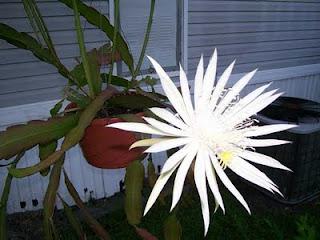
Unfortunately, the flower, which can be 6" or more across, only lasts for 1-3 days (nights). It opens in the evening around dusk and closes at the first sign of sunrise in the morning. If you are lucky, this will repeat for a couple of more nights. Flowering times range from late Spring through most of the Summer.As you can imagine being from that far South, it can only grow in USDA zones 10b to 12. They will tolerate temperatures less than 32 degrees Fahrenheit for a few hours, but will be damaged if exposed to freezing temperatures for any length of time. Most of the time it is grown as a house plant. Don't let the length possibility scare you though, this plant can be cut back to whatever size you want it to be and it will be happy. If you are blessed with ample room, yours could look like this picture I found online:
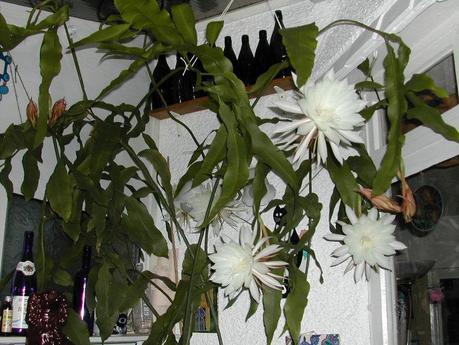 The Queen needs partial shade, remember, she is used to growing in the tree tops of the jungle. She also needs a well draining potting soil with compost and plenty of humus along with sufficient moisture, especially in the Summer. A cactus potting mix works well. As your soil mix breaks down, the roots of the plant can suffer from too much water and lack of air around the root mass. It is a very good idea to repot every 2 years or so to keep the plants healthy.
The Queen needs partial shade, remember, she is used to growing in the tree tops of the jungle. She also needs a well draining potting soil with compost and plenty of humus along with sufficient moisture, especially in the Summer. A cactus potting mix works well. As your soil mix breaks down, the roots of the plant can suffer from too much water and lack of air around the root mass. It is a very good idea to repot every 2 years or so to keep the plants healthy. After a long Winter indoors, be very careful when bringing it back outside, it can get sunburned very easy. The leaves are broad and do not resemble the usual fleshy leaves of other succulents.
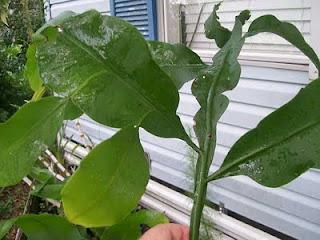 This is your official geek alert!
This is your official geek alert! The leaf-like structures are actually flattened stems, generally called cladophylls.
You will want to fertilize the plants on a monthly basis with a balanced fertilizer diluted to 1/2 the strength recommended on the label. Do not use a fertilizer too high in nitrogen, the first number should not be over 10. It can cause the growth to be mushy. Do not fertilize during the Winter.
The Epiphyllum oxypetalum is an easy and fast growing epiphyte. They can be propagated from cuttings. Dip the cuttings in rooting hormone before planting in moist, but not soggy, soil mix.
This would be a good candidate for a cutting:
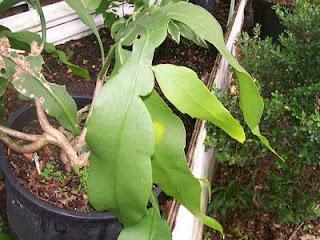
The smaller leaf off to the right is the one I am talking about. They can also be propagated by dividing large plants. It generally takes 2–3 years to raise a blooming size plant from a rooted cutting.
As for pests, there are a few. Scale and mealybugs start the list, they can be controlled with insecticidal soap. Snails and slugs love epiphyllums! They can skeletonize the leaves in a short time and will do lots of damage. That is why these plants should never be allowed to grow on the ground. Snail bait should be put out on a regular basis. Please read the label regarding these products.
This plant can definitely bring a huge WOW factor to any house or yard. It is one of the easiest to grow. There is one more nice bonus to this plant, SHOULD you be lucky enough to have it happen. Once the Queen flowers and IF she happens to get pollinated, usually by moths and sometimes bats, it will produce fruit and it IS edible!
Kinda looks like this:
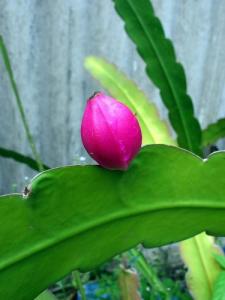 Happy Growing!
Happy Growing!Darren

